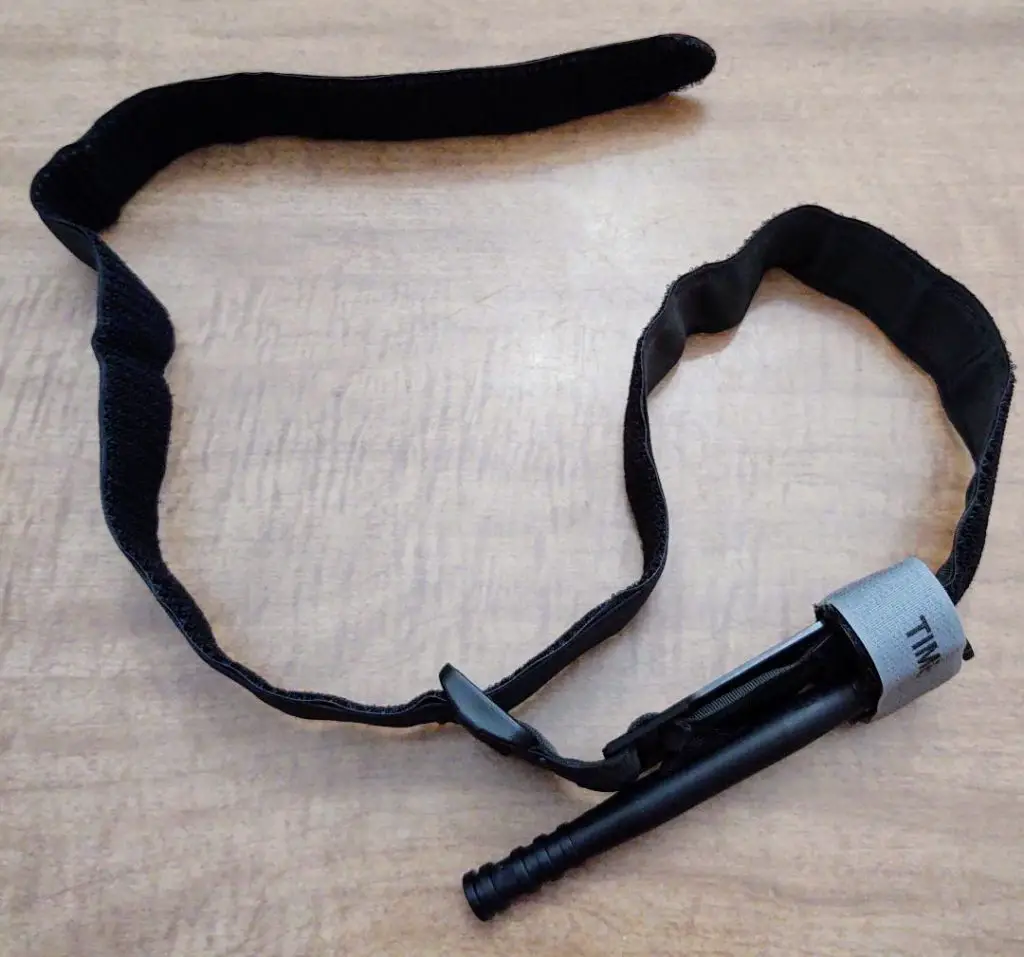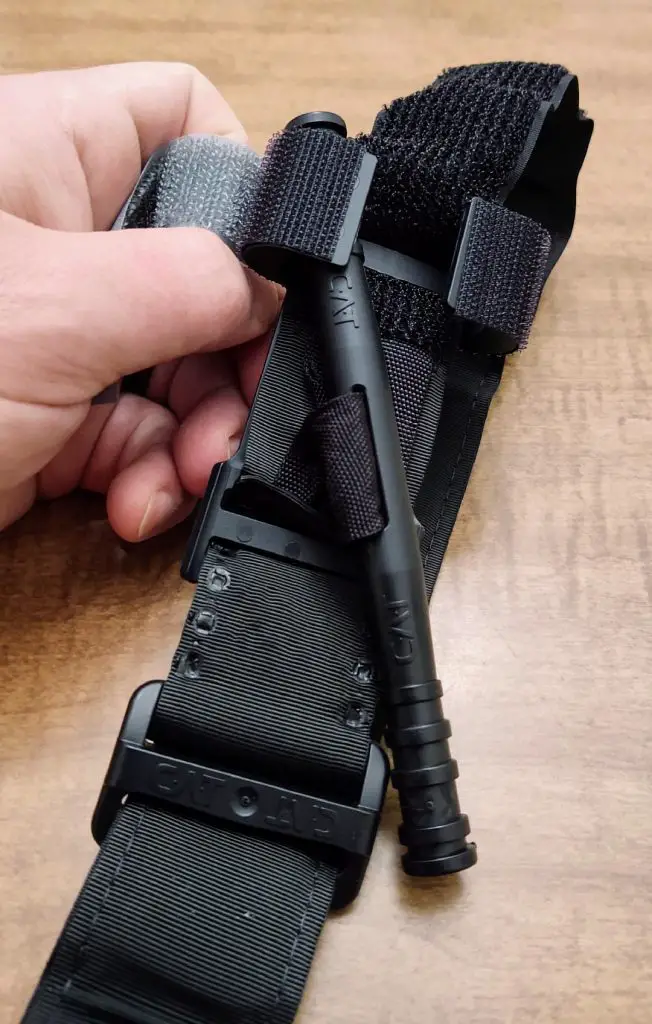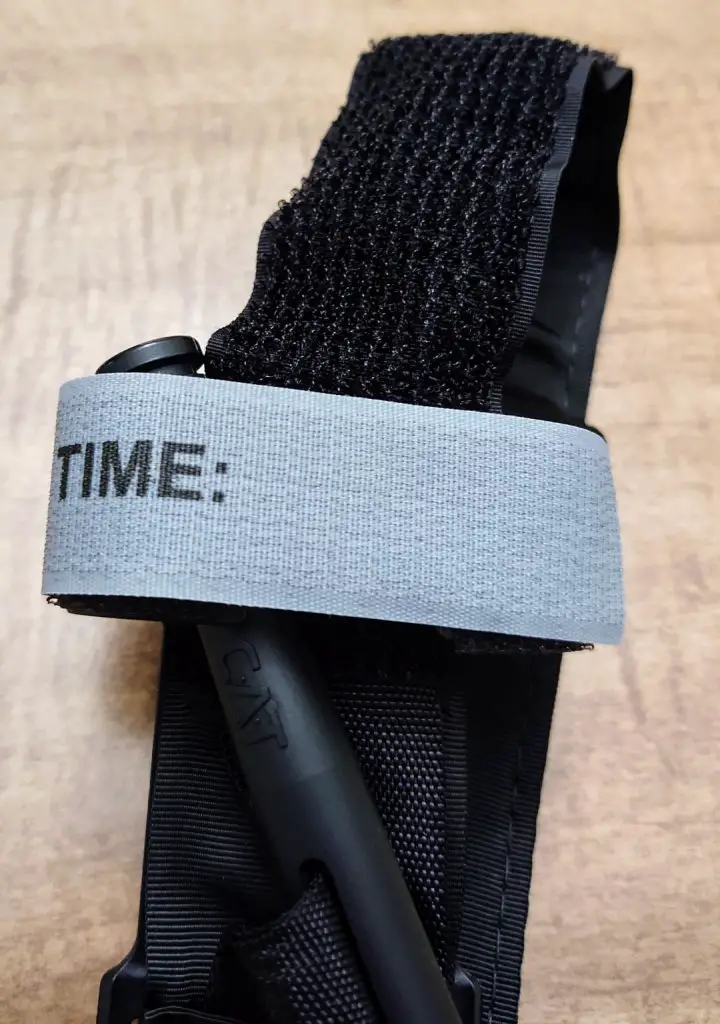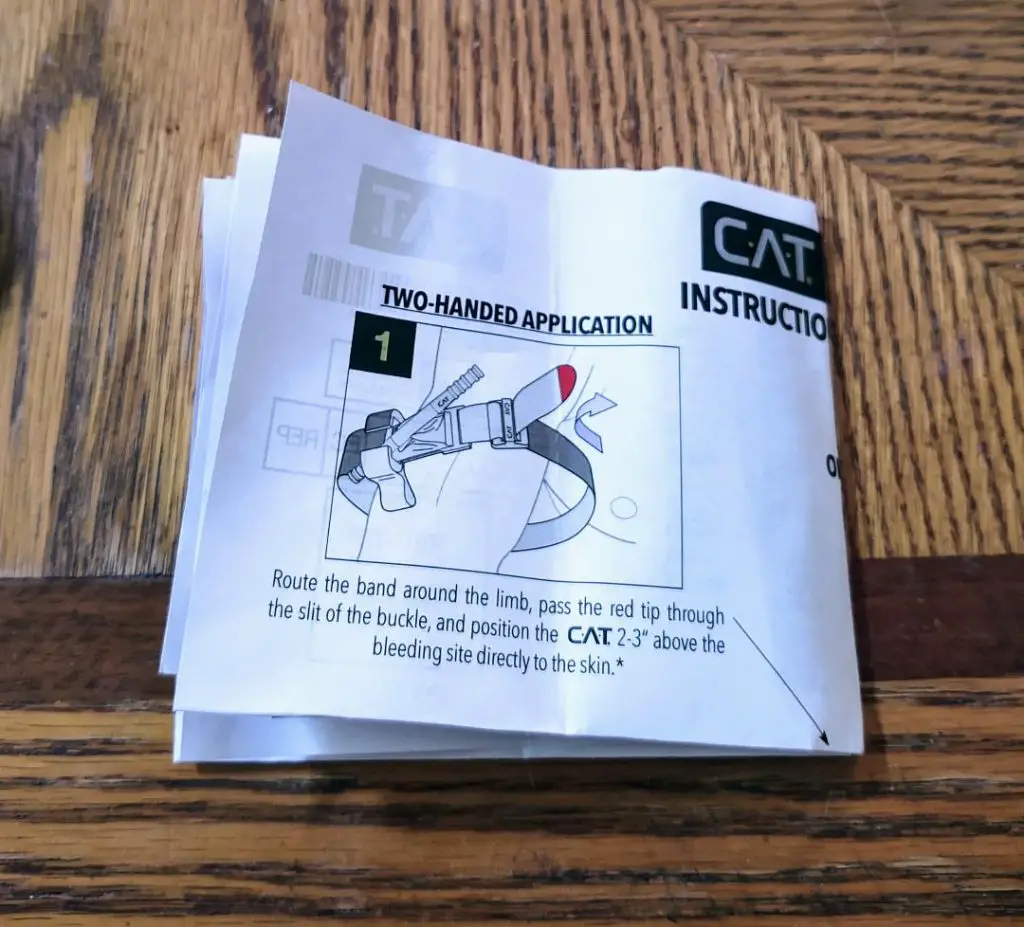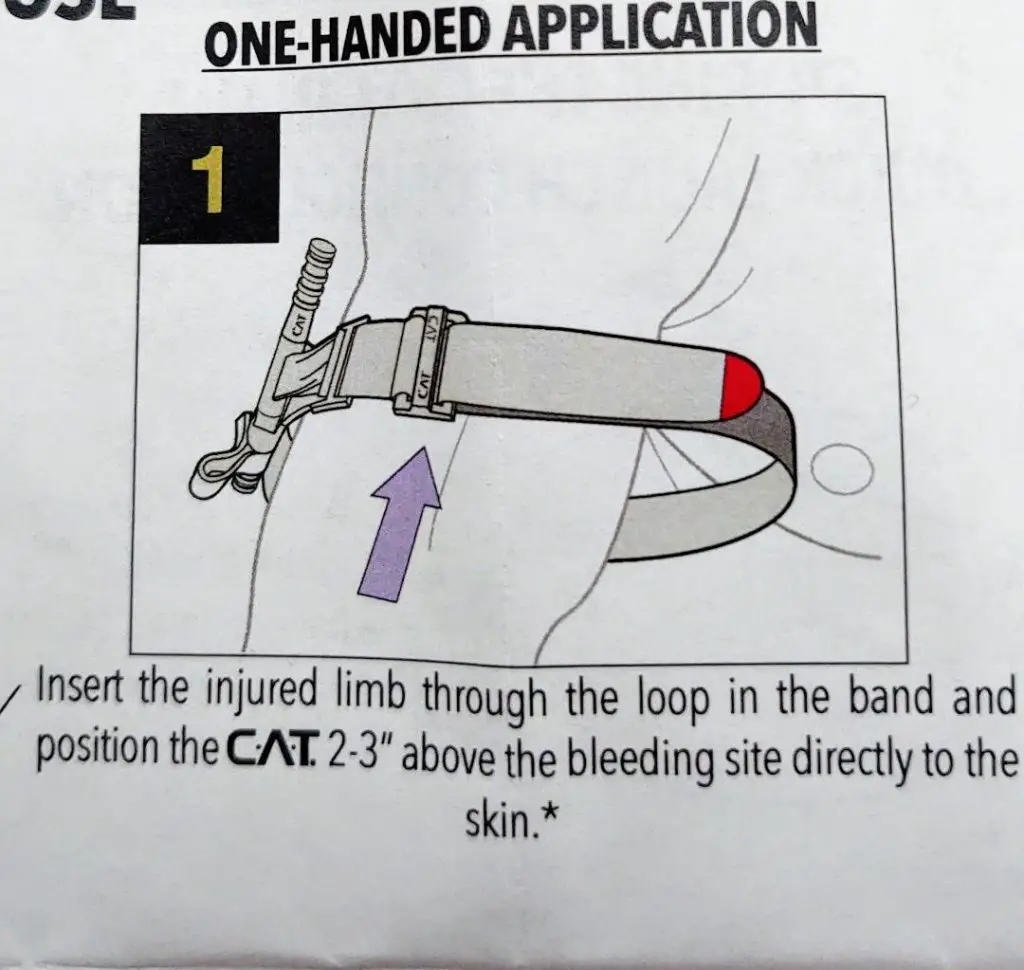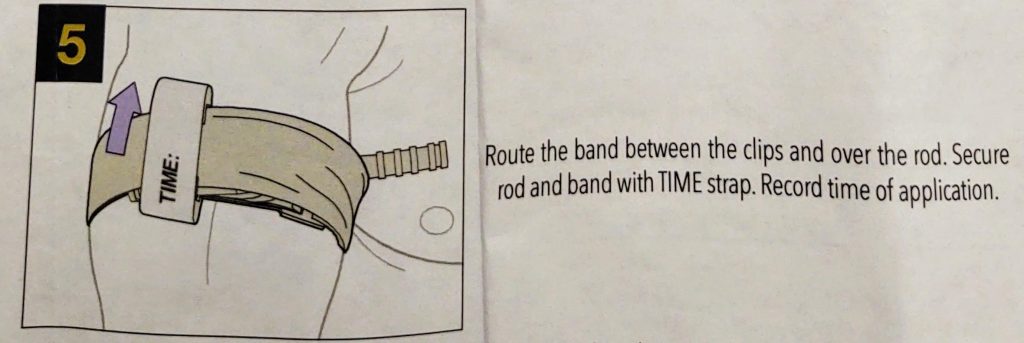When it comes to survival situations and prepping for emergencies, everyone has their “boo-boo” kits. I call them that because when it comes to controlling blood loss, they are only good for minor cuts and injuries.
Don’t get me wrong there is nothing bad with your average first aid kit but there is only so much one can do with a few gauze pads and band-aids.
I take that back, there is one thing bad about the average first aid kit, and that is that they do not include a tourniquet.
When a major injury happens to you or something close to you, you only have minutes to act to control blood loss. The most efficient and effective way to control blood loss on an extremity is with a tourniquet.
Recently, I needed to add a few items to my first aid kit and I wanted to review an exceptionally good tourniquet offered by Rescue Essentials, the Combat Application Tourniquet (CAT) Gen 7. Before I get into the hands-on, firsthand account of the tourniquet, let me start with what the CAT has to offer.
SKIP AHEAD
CAT Gen 7 Specifications and Features
The below specifications and features of the Combat Application Tourniquet were obtained directly from the Rescue Essentials website. Because this is such a critical piece of gear, I did not want to get anything about it wrong.
Single Routing Buckle
- Faster application and effective slack removal resulting in decreased blood loss and fewer windlass turns to achieve arterial occlusion
- Simplified training with single protocol directions for all applications
Windlass Rod
- Increased diameter for enhanced strength
- Aggressive ribbing for improved grip
Windlass Clip
- Bilateral beveled entry for rapid windlass lock
- Bilateral buttress for added strength
Windlass Strap
- Sonic welded to clip for constant contact
- Color changed to Gray for tactical considerations (Black CAT Only)
Stabilization Bar
- Reinforced, beveled contact bar maintains the plate’s integrity and decreases skin pinching
Dimensions: 6.5″ H x 2.4″ W x 1.5″ D (packaged)
Dimensions: 37.5″ H (open)
Weight: 2.9 oz
Color Options
The CAT Gen 7 comes in three different colors. They are, Tactical Black, Trainer Blue, and EMS Orange
Note: Also, the CAT Gen 7 has been proven to be 100% effective by the U.S Army’s Institute of Surgical Research in occluding blood flow in extremities.
CAT Gen 7 Hands-On Review
To start, I wanted to address something that many people may not realize about tourniquets, including myself for quite some time.
Not just any old item, such as cordage, should be used as a tourniquet. It can be used but there is a big difference in its application, effectiveness, and potential damage that could be caused by using it.
Thinner material, such as twine or another cordage may help to reduce or stop bleeding, but it will likely cause additional nerve and tissue damage due to the small diameter/size of the material.
This is because when a tourniquet is applied it has to be tight to stop blood flow. If you are using cordage, for example, that is going to direct a lot of pressure onto a very small area of the extremity.
Of course, in a life or death situation, you may be forced to use whatever is available.
However, with proper planning, this shouldn’t be an issue because you should have an appropriately sized tourniquet on hand.
What I Like About the CAT
Fortunately, I have never had to use a tourniquet in a real-life situation, (knock on wood) but if I ever had to, I feel comfortable using the CAT Gen 7 for the following reasons.
First off and most importantly, it can be applied one-handed. When thinking through the list of possible injuries a person can sustain coupled with the fact, I may be alone when it happens, the ability to be able to apply the tourniquet one-handed is extremely important to me.
Next, the combination of the quick pull strap and the windlass rod means the tourniquet can be applied quickly. If I am applying a tourniquet then things are pretty bad, and time is of the essence.
I performed a few practice trials with the CAT and I was able to apply it using only one hand and went through all the steps in under twenty seconds. (I’m positive I could cut that down with more practice)
Keep in mind that the CAT was out in front of me instead of being stored in my first aid kit somewhere, and I didn’t have the stress of being injured. However, I still think that is an impressive time for applying such a critical first aid item once it is in hand.
Even though I ordered a black tourniquet there is a bright white section of material for writing down the time of when the tourniquet is applied.
How long a tourniquet has been on can be an extremely important piece of information later for medical staff and how they treat you. This is because as soon as blood flow is cut off, cells begin to die.
If you do not normally carry a writing utensil then I highly recommend clipping a permanent maker to each tourniquet you have. This way the time can easily be recorded right after application and you will not have to second guess yourself later on.
Lastly, the CAT Gen 7 is wide enough that I do not have to worry about additional tissue or nerve damage. It is a possibility that it could still happen, but the chances are much lower with the CAT than if I was using an improvised tourniquet or one that is smaller in diameter.
Other than the tourniquet, there is an easy-to-follow instructional pamphlet included that provides a step-by-step procedure with pictures. On the backside, it also shows how to fold the CAT back up so it is easier to store.
Here is a quick picture of the instructions, but in the next section, I will detail exactly how to use the CAT Gen 7.
How to Use It
Here is a link to the Rescue Essentials webpage on the CAT Gen 7. At the bottom of the page, you will find a short video on how to apply the tourniquet. I recommend watching the video because it shows exactly how to use the tourniquet and it’s only about a minute and a half long.
Below I will include a short step-by-step procedure based on the video, but I will be using the pictures included with the instructions that came with the CAT. Here is how the tourniquet is applied:
Step One
Open the tourniquet and put the injured limb through the loop. Then position the tourniquet two to three inches above the injury that is bleeding. It is important that the tourniquet be applied directly to the skin for maximum effectiveness.
Step Two
Pull the band tight and fasten back on itself all the way around the limb but not over the rod clips. At this point, it should be tight enough that the tips of three fingers should not be able to fit under the ban.
If the tips of three fingers can be fit under the band, it probably needs to be resecured and tightened.
Step Three
Twist the windlass rod until the bleeding from the injury has stopped.
Step Four
Once the bleeding has stopped, secure the rod into the clips to lock it in place. Continue to check for bleeding and a distal pulse.
If you notice bleeding or a distal pulse, you may need to consider retightening the tourniquet or applying a second tourniquet.
Step Five
Bring the tourniquet band through the clips and over the rod. Secure the rod and band with the time strap. Use a writing utensil to record the time of application on the time strap
Pros and Cons
Pros
- Affordable
- Extremely easy to use
- Can be used one-handed
- Has a windless rod with easy to use locking clips
- Has a time application strap
- Comes in three different colors
- Extremely lightweight and compact
- Was given the seal of approval by the U.S Army’s Institute of Surgical Research
Cons
- As of now, I cannot think of one negative thing to say about this product
FAQs
Belts are usually wide enough, but the problem is that most people will try tighten the belt the same way they do on their waistline. Generally speaking, this will not get the belt tight enough to be effective.
If blood loss is extreme and cannot be controlled with a bandage and direct pressure, then the next step would be to apply a tourniquet.
A tourniquet can only be used on the arms and legs. It cannot be used for head injuries or injuries to the torso.
This is a common misconception that the use of a tourniquet automatically equals amputation. While there is always the possibility of amputation, the chances of it happening are low if the injured individual arrives at a proper medical facility within hours of application.
Some tourniquets are advertised as being reusable. Having said that, tourniquets should not be reused and should be discarded after use. Replace a used tourniquet in your kit with a new one.
Verdict
If you have a first aid kit it is my opinion that there should be a tourniquet in it, and you should know how to use it. Unfortunately for us, not all the injuries we incur are minor boo-boos.
Tourniquets are not that expensive, especially when compared to their ability to save a life, and in the case of the CAT Gen 7, it is extremely easy to use.
I would highly recommend this tourniquet for anyone looking to build up their first aid kit and who wants to be prepared for a situation when acting quickly can save a life.
Lastly, if this tourniquet is good enough for the Army Institute of Surgical Research, it is good enough for me.
Thanks for reading and stay prepared!
If you have any questions or comments on this tourniquet, please feel free to sound off in the comment section below!



